Authentic Jamaica Blue Mountain No. 1 Coffee Bean Story Flavor Taste Characteristics What Grade How to Distinguish between True and False Blue Mountain Coffee Brand
There are two kinds of Blue Mountain Coffee on the market, which will be bought by mistake. One is Blue Mountain flavor, which refers to beans baked with beans from other producing areas, which will be marked as Blue Mountain flavor coffee. The other kind of Blue Mountain Coffee refers to the Blue Mountain Coffee from the Blue Mountain region of Jamaica, and the Blue Mountain Coffee we refer to is this kind of coffee.
The Jamaican Blue Mountain No. 1 coffee sold on the front street coffee has a certificate issued by the Jamaica Coffee Bureau. In addition, the wooden bucket packing the Jamaican Blue Mountain coffee beans will have the logo of a green frog (you can see the picture below when the front street coffee was picked into the Jamaican raw beans). This is the front street coffee specially selected to produce Jamaica Blue Mountain No. 1 coffee farm with rainforest certification, that is, Clifton Farm. And Jamaica is the only producing area that uses barrels of raw beans. There is also the most iconic Blue Mountain flavor, the real Blue Mountain is very rich in aroma, balanced taste, there will not be any kind of taste prominent or lack of feeling. The price of authentic Jamaican Blue Mountain No. 1 coffee will be higher than that of other coffee. Qianjie Coffee believes that there are three most important reasons: small quantity, good flavor and strict quality control.
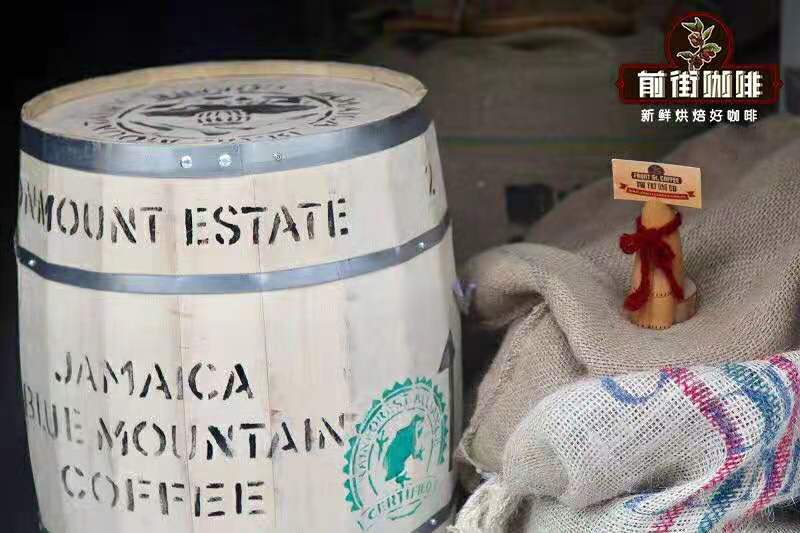
When it comes to drinking coffee, many friends will immediately say, give me a cup of Blue Mountain. Jamaican Blue Mountain Coffee has a high reputation, low production and a long history. It can be said that even if you have never tasted boutique coffee, you have heard of Blue Mountain one coffee. It is often seen in the market that there are Blue Mountain No. 1 coffee, Blue Mountain flavor coffee and Blue Mountain blend, which are dazzling. Not all those with the words Blue Mountain are authentic Blue Mountain No. 1 coffee. If you drink fake Blue Mountain a little inadvertently, how can you tell which Blue Mountains are real? First of all, Qianjie Coffee takes you to understand how Blue Mountain Coffee comes from. The history of Jamaican coffee can be traced back to the 18th century, when King Louis XV of France ordered the cultivation of coffee in Jamaica in 1717, and in the mid-twenties, the Governor of Jamaica, Nicholas. Nicholas Lawes imported Arabica seeds from Martinique and began to plant them in St. Andrew. Coffee trees have been introduced into Jamaica and coffee is grown in the Blue Mountains, which is divided into high-altitude Jamaican Blue Mountain Coffee, Alpine Coffee and Jamaican Coffee. Different grades also determine different prices. Planting altitude
The Blue Mountains are located in the eastern part of the island of Jamaica, hence its name because it is surrounded by the Caribbean Sea. On clear days, the sun shines directly on the blue sea, and the peaks reflect the bright blue light of the sea. The highest peak of the Blue Mountains, which is 2256 meters above sea level, is the highest peak in the Caribbean and a famous tourist attraction. Located in the coffee belt, with fertile volcanic soil, fresh air, no pollution, humid climate, foggy and rainy all the year round (the average precipitation is 1980 mm, the temperature is around 27 degrees), this climate has created the world-famous Jamaican Blue Mountain Coffee. It also creates the highest price coffee in the world.
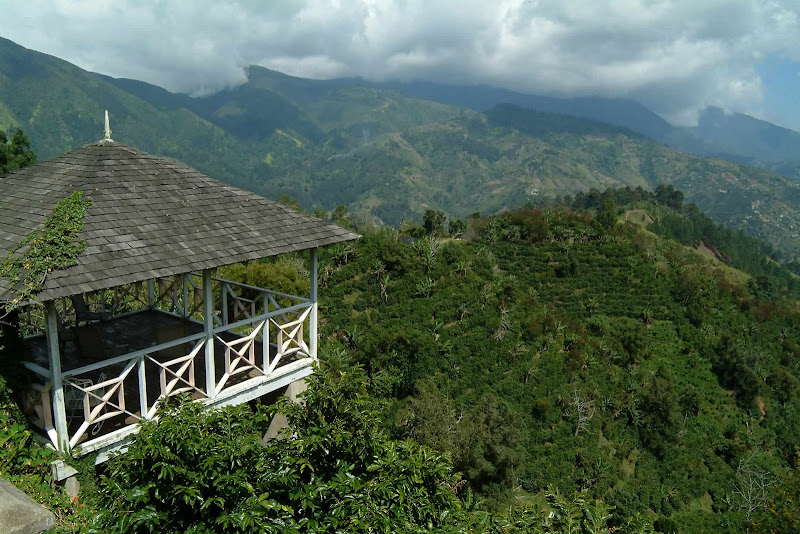
The real Blue Mountain Coffee is one of the most advantageous coffee growing conditions in the world. The weather, geological structure and topography of Jamaica provide a unique ideal place. Designated Jamaican Blue Mountain Coffee can only be grown in the Blue Mountain area, in Kingston, Jamaica is in the eastern north of the island. The ridge across Yatoujia extends to the east of the island, and the Blue Mountains are more than 2100 meters high. The cool weather, foggy weather and frequent rainfall reconcile the rich land of Rain Water. Here people use mixed planting to grow coffee trees next to banana and avocado trees on terraces.
Moreover, the mountain is very uneven, and the process of harvesting is very difficult (the coffee harvester is almost entirely female). Their coffee trees are on rugged hillsides, and the picking process is so difficult that non-local skilled female workers are simply unable to do it. It is very important to choose the right ripe coffee beans when picking. Immaturity or ripeness will affect the quality of the coffee.
Front Street Coffee Jamaica Blue Mountain No. 1 Coffee producing area: blue Mountain producing area Farm: Clifton altitude: 1310m Variety: iron pickup treatment: washing or Solar
Grade: NO.1
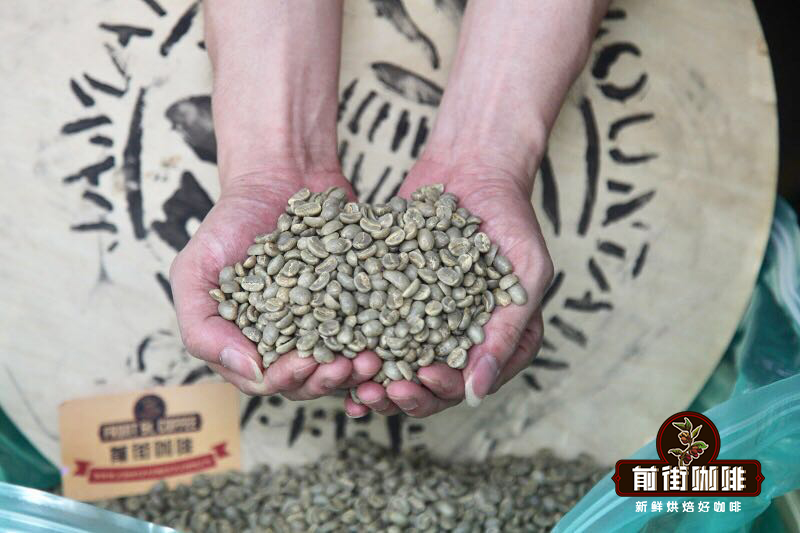
Qianjie Coffee Lanshan No. 1 coffee variety Qianjie Coffee Lanshan No. 1 coffee bean is Tibica variety, the top leaf of the iron pickup is bronzed, the bean body is oval or thin, the tree is tall, the branch is slightly inclined, the angle is 50-70 degrees, the flavor is elegant, but the physique is weak, the disease resistance is poor, and the coffee yield of each tree is very low.
The leaf tip of the iron pickup species has a feature, which is red copper, which is called red top coffee. Coffee tree opposite leaves are long oval, smooth leaves, the end of the branch is very long, few branches, and the flowers are white, open at the base of the petiole connecting the branch. Ripe coffee berries look like cherries and are bright red.
Qianjie Coffee Lanshan No.1 Coffee Bean treatment
Before this year, Lanshan No.1 coffee can only be washed. The peel, pulp and mucous membrane were removed by washing and fermentation. Farms that use the washing method must build washing ponds and be able to introduce an endless supply of running water. During the treatment, first remove the peel and pulp and let it ferment for 12-18 hours, then put the mellow beans into the pool and pass them back and forth, using the friction of the beans and the power of running water to wash the coffee beans until smooth and clean. After washing, at this time, the coffee beans are still wrapped in the pericarp with a moisture content of 50%. They must be dried to reduce the moisture content to 12-14%, otherwise they will continue to be mellow, moldy and rotten. After that, the coffee beans are screened and stored in a special warehouse. These procedures must be strictly mastered, otherwise, the quality of the coffee will be affected.
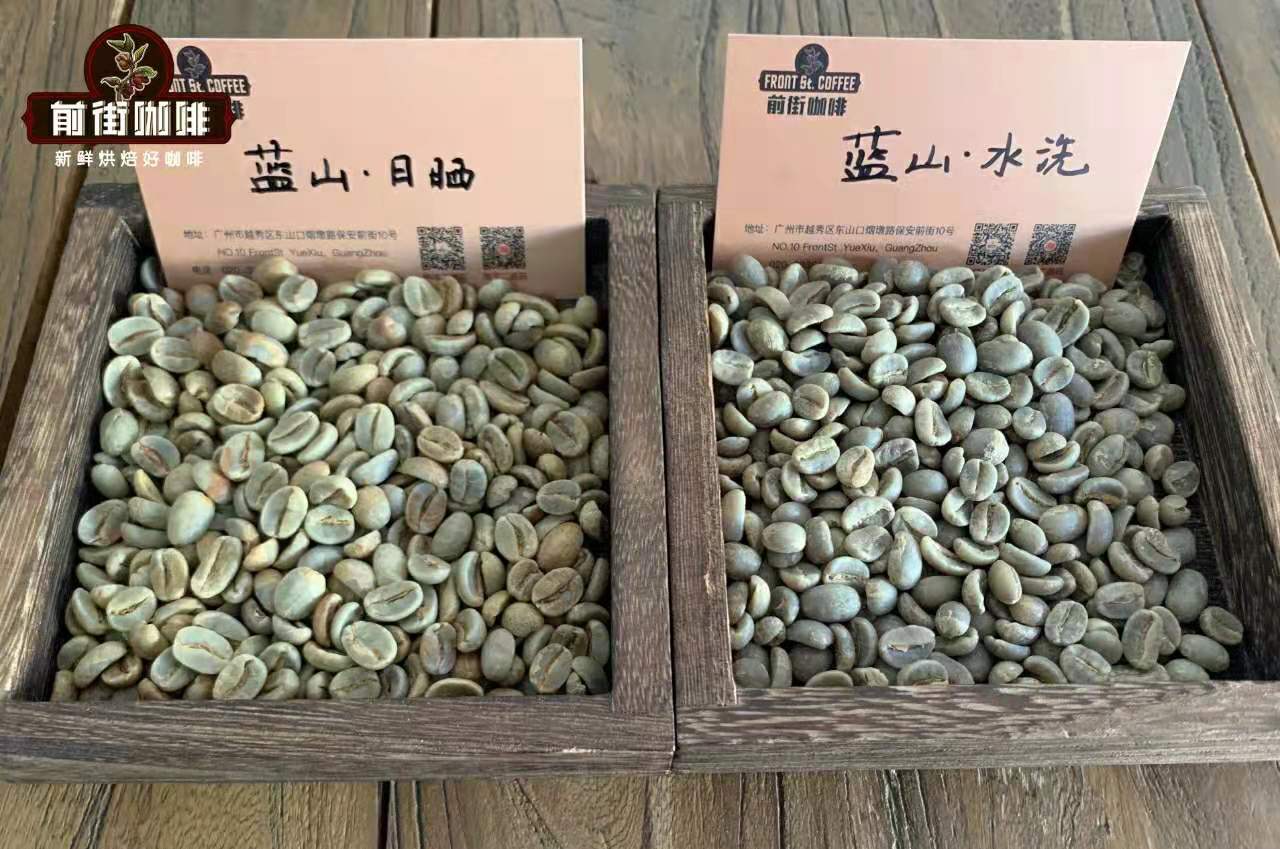
In 2020, the Blue Mountain producing area also exported a batch of sun-treated Blue Mountain No.1 coffee. Qianjie was also introduced and baked at the first time.
In fact, the production of this sun blue mountain coffee is also very difficult, why there was only water washing before, that is because water washing is the most essential embodiment of the blue mountain flavor, and changing the treatment method will certainly change its flavor structure. This is why Qianjie Coffee recommends washed coffee beans every time it introduces coffee beans in a certain producing area, because washing best represents the flavor of the producing area. Of course, Blue Mountain Coffee uses sun treatment, more to follow the development of the market, just like Qianjie Coffee some time ago also added a sun-dried Mantenin coffee beans, which is also different from the traditional wet planing method.
The Blue Mountain area, the three major producing areas of Blue Mountain Coffee, is a small area with a planting area of only 6000 hectares, and it is impossible to grow all the coffee marked "Blue Mountain" there. Another 12000 hectares are used to grow two other types of coffee (non-Blue Mountain Coffee): Alpine Top Coffee and Jamaican Coffee.
Today, St. Andrew is still one of the three major producing areas of Blue Mountain Coffee, while the other two are Portland and St.Thomas. Some small estates also grow Blue Mountain Coffee, such as WallenfordEstate, SilverHillEstate and AtlantaEstate in J.Martinez. Even the largest landowners in the region are small-scale growers by international standards, many of whom are small landowners whose families have been working on the land for two centuries.
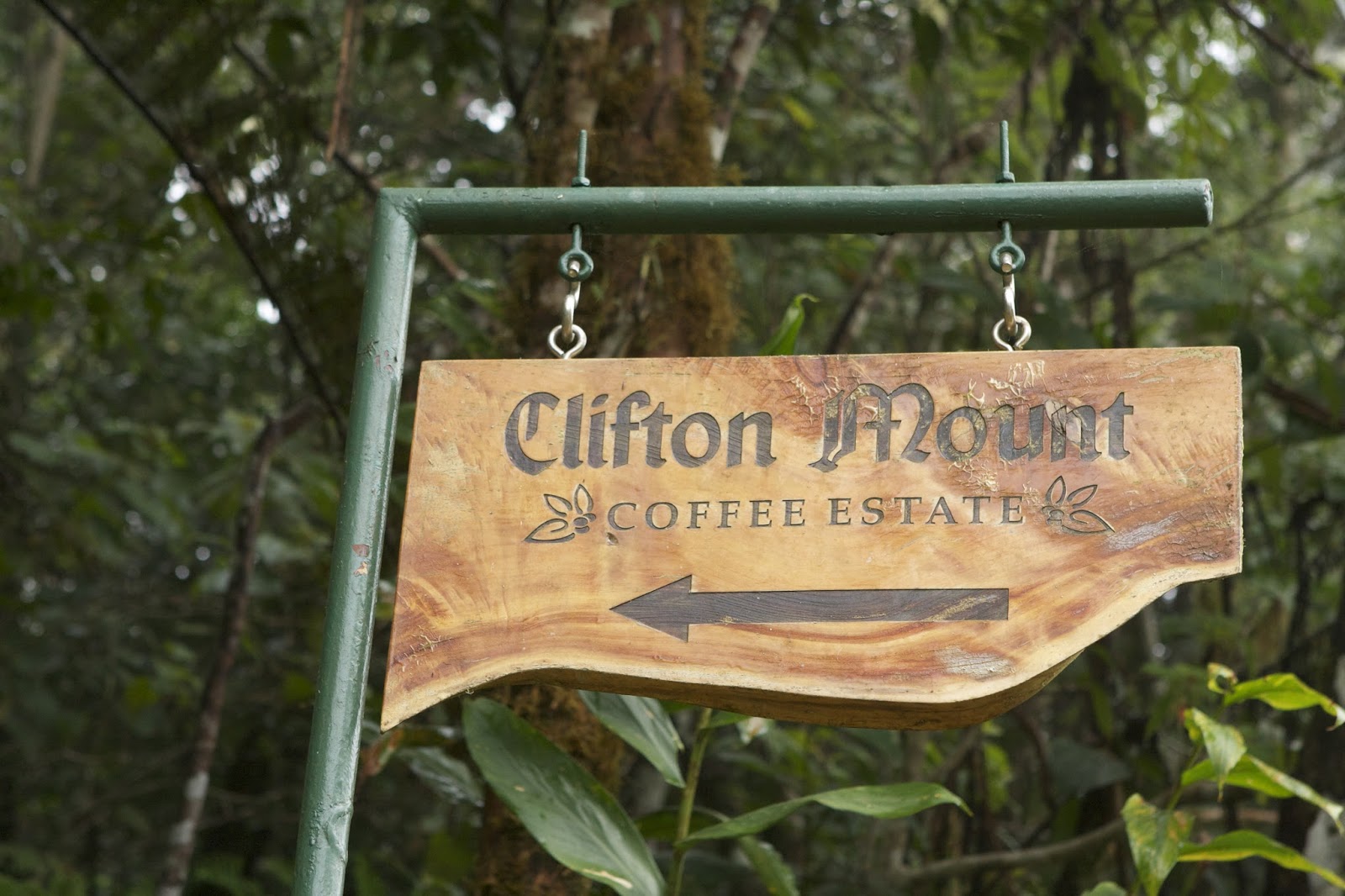
At present, there are six marks that can represent the origin of Blue Mountain Coffee, such as Memphis River Embankment Central Factory (M.B.C.E), Blue Mountain Coffee Cooperative Factory (M.H.C.C.T.), Portland Blue Mountain Coffee Cooperative Factory (P.X.X.S.H.), Coffee Industry Association (Wallenford), Coffee Industry Association (St. John's Peak) and J.A.S (Lanli). There are also some manor grades that are marked on the barrel.
Why did Japan have the priority to purchase at that time?
The Jamaican Coffee Industry Committee was established by the Government of Jamaica in 1950 to develop quality standards for Jamaican coffee and to monitor the implementation of quality standards to ensure the quality of Jamaican coffee. The Committee awarded special official seals for raw and roasted coffee exported from Jamaica because the use of Japanese loans improved the quality of production and thus ensured the market.
By 1981, about 1500 hectares of land in Jamaica had been reclaimed for coffee cultivation, followed by investment in another 6000 hectares of coffee land. In fact, today's Blue Mountain area is a small area with a planting area of only 6000 hectares, and it is impossible to grow all the coffee marked "Blue Mountain" there. Another 12000 hectares are used to grow two other types of coffee: Alpine Top Coffee and Jamaican Coffee.
According to Jamaica Coffee Bureau export statistics by 2013, 85% of the limited Blue Mountain coffee bean quotas were exported to Japan, 5% to the United States, 5% to Europe and 5% to other countries. However, China accounts for 15% of the global consumption and distribution of authentic Jamaican Blue Mountain coffee, according to the International Coffee Association. This is due to the fact that some shares of Jamaican Blue Mountain coffee in Japan, Australia and Europe are exported to Taiwan through direct subsidiaries.
Jamaica is the only country in the world that has a government coffee regulatory agency-Jamaica Coffee Industry Authority (CIB), which belongs to the Ministry of Agriculture and Fisheries of Jamaica. The function of CIB is planting technical guidance, processing training, fair trade, quality supervision and a series of things about the quality and brand of Jamaica Blue Mountain. The members of the board of directors of CIB are all owners of more than a certain amount of plantation estates in Jamaica (due to the transfer of industry, the newly certified Blue Mountain Manor in Jamaica requires an area of more than 50 hectares). CIB stipulates that only the blue mountain coffee beans produced in the producing area of Jamaica Blue Mountain more than 2200 feet can be called Jamaica Blue Mountain Coffee. According to the bean size, the grades are NO.1, NO.2, NO.3 and hand-selected PB. Among them, the basic standard of NO.1 Blue Mountain raw beans is beans with more than 17 mesh, defect rate less than 3%, moisture content about 13%, and so on. In addition, so far, Lanshan Coffee raw beans are treated only by water washing, and there are no sun and other treatments.

Another company worth mentioning is Coffee Trades, whose estate name is CLYDESDALE. The company's coffee factory is in the backyard of the CIB office building. The estate is about 1200 meters on the Blue Mountain hillside. The other two largest Blue Mountain Coffee companies in Jamaica are Wallenford and Mavis Bank, which used to be state-controlled companies. Wallenford production exceeds 60% of all Jamaican Blue Mountain production. And it is one of the few Jamaican Blue Mountain companies with three grades of coffee: Jamaican Blue Mountain, Jamaican Alpine and Jamaican Special Coffee. Classification and grading of Blue Mountains
The history of Jamaican coffee can be traced back to the 18th century. The British introduced coffee trees to Jamaica and planted coffee in the Blue Mountains, which is divided into high-altitude Jamaican Blue Mountain Coffee, Jamaican Alpine Coffee and Jamaican Coffee. Different grades also determine different prices.
(1) Jamaica Blue Mountain Coffee is divided into four grades each under Blue Mountain Coffee and Alpine Coffee. From top to bottom in terms of quality, NO.1, NO.2, NO.3 and PB,PB are round beans. According to CIB standards, only coffee grown above 666m above sea level is called Jamaican Blue Mountain Coffee. The best coffee is located in the Blue Mountains of Jamaica with a height of about 910-1700 meters. The coffee produced in the bean mountain area is located on a dangerous hillside with few yields, large particles, good quality, harmonious taste, and appropriate sour, bitter, fragrant, mellow and sweet taste. It is recognized as the best in the world, so the price of Blue Mountain No.1 is the highest of all Blue Mountain Coffee.
(2) Jamaica Alpine Coffee
The coffee produced below 910 meters in the Blue Mountain area of Jamaica is called Alpine Coffee, which is second only to Blue Mountain Coffee in quality. it is called the brother variety of Blue Mountain Coffee by industry insiders. Jamaica Blue Mountain caffeine produces very little, so if you want to taste Jamaican coffee, then Jamaican Alpine Coffee is your best choice.
(3) Jamaica preferred coffee Jamaica preferred coffee grows in areas below 460 meters above sea level and is generally consumed on the island of Jamaica.

(in the picture, elevation is translated from feet to meters, 910m equals 3000 ft, 460m equals 1500 ft.)
Real Jamaican Blue Mountain Coffee is certified
The Jamaican government used to insist that all Blue Mountain coffee is roasted in Jamaica to ensure that the quality remains the same. In fact, baking is a fine art, and it takes experience, training and expensive equipment to do a good job. From the consumer's point of view, coffee beans should be obtained and drunk immediately after baking. Coffee roasting in Jamaica is unlikely to meet this requirement. Now, raw coffee beans from Jamaica can be exported.
Qianjie coffee has come back from its origin into the Blue Mountains of Jamaica. At present, the Jamaican Coffee Bureau can issue certificates for all exported Blue Mountain coffee.

There are three types of certificates:
(1) Certificate of quality issued by the Jamaican Coffee Agency
(2) the authorized sales certificate issued by the blue mountain coffee manufacturer. (blue Mountain Coffee is distributed by 4 processing producers licensed by the Jamaican government and exported by 16 licensed exporters)
(3) Certificate of origin of Jamaica Blue Mountain Coffee
The quality certificate indicates the time and quantity. The Jamaica Coffee Bureau randomly selects a package from the Blue Mountain Coffee for inspection, and issues a certificate if the conditions of the Blue Mountain Coffee are met.
Roasting Analysis of Qianjie Coffee
The front street roaster uses medium roasting for Jamaica Blue Mountain No. 1 coffee to highlight the balanced and mellow flavor of Blue Mountain. Take Yangjia 600N semi-direct fire roaster and 500g raw beans as an example.
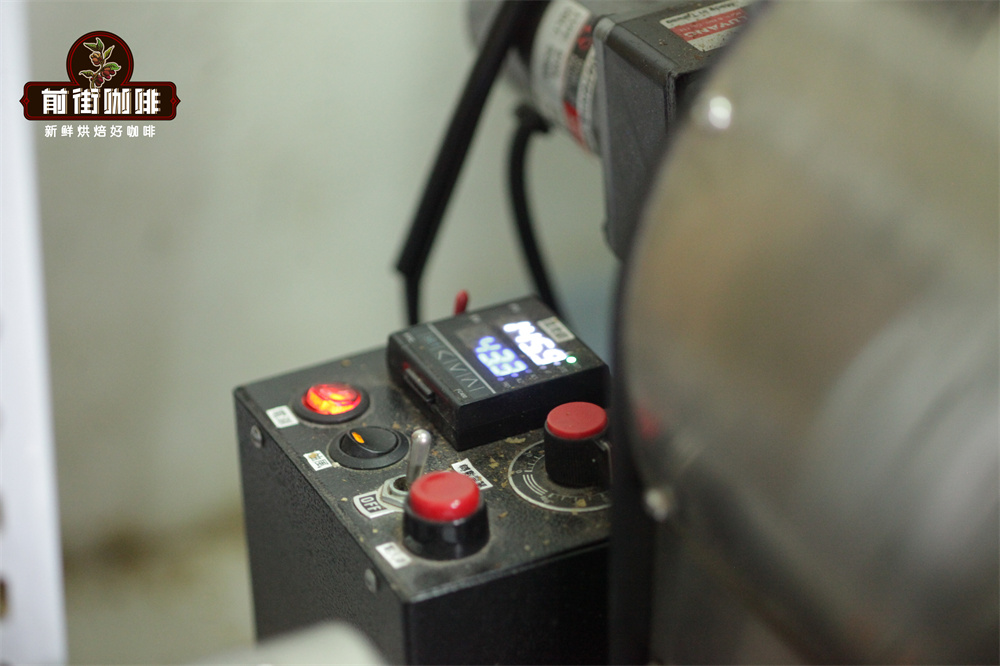
The furnace temperature is 165℃, the firepower is 130mm, the throttle is set up 3; the temperature recovery point is 1pm / 39th / 32 ", when the furnace temperature is 95.8℃, the firepower is unchanged; the blower door is adjusted to 4pm in 3 minutes, and the firepower is increased to 140min. When the furnace temperature is 153.3 ℃, the bean table turns yellow, and the smell of grass disappears completely, and enters the dehydration stage. When 8 minutes after the explosion, the smell of toast obviously changes to the smell of coffee, which can be defined as a prelude to an explosion. At this time, you should listen clearly to the sound of an explosion point, start to explode until 10 minutes after the explosion, develop 3 minutes after an explosion, and drop beans for 198.5 ℃.
Qianjie Coffee Blue Mountain No.1 Coffee flavor
The Blue Mountain Coffee sold on Qianjie Coffee tastes very clean, and it is one of the sweetest coffees in the world. This taste has been described by JimReynolds in Peet Coffee and Tea: the best example of Jamaica's Blue Mountain Coffee is its aroma, smoothness and richness, and it feels like a gem to me. It is as precious as a gem. It's complex, but very mild, it's sweet, it's very mellow. You have to taste it to know what I'm talking about.
Unique growth conditions, and in all the production process are very careful, making Jamaica Blue Mountain Coffee very famous. The taste is full-bodied and mellow. the sweet, sour and bitter taste of coffee is perfect, with no bitterness at all, only a moderate and perfect sour taste and a long-lasting fruit taste.

Qianjie Coffee teaches you how to distinguish between true and false Blue Mountains.
1. Appearance: the raw beans of Blue Mountain Coffee are cyan, the appearance is very neat, the size is medium to small, the ends are warped up, and the volume increases a lot after baking, which is very full.
2, grinding beans: the real blue mountain coffee beans grow at high altitude, its cytoplasmic structure is relatively loose, it feels very crisp, cool and continuous when grinding by hand, and there is no feeling of resistance.
3. Aroma: the aroma is very rich and dense; the so-called blended Blue Mountain Coffee does not have this aroma.
4. Taste: the real Blue Mountain Coffee has a balanced and full-bodied taste, without any feeling of prominence or lack of taste, which is unmatched by any other coffee beans, and the most critical identification point. The aroma of blue mountain peas is more subtle and the taste is relatively stronger.
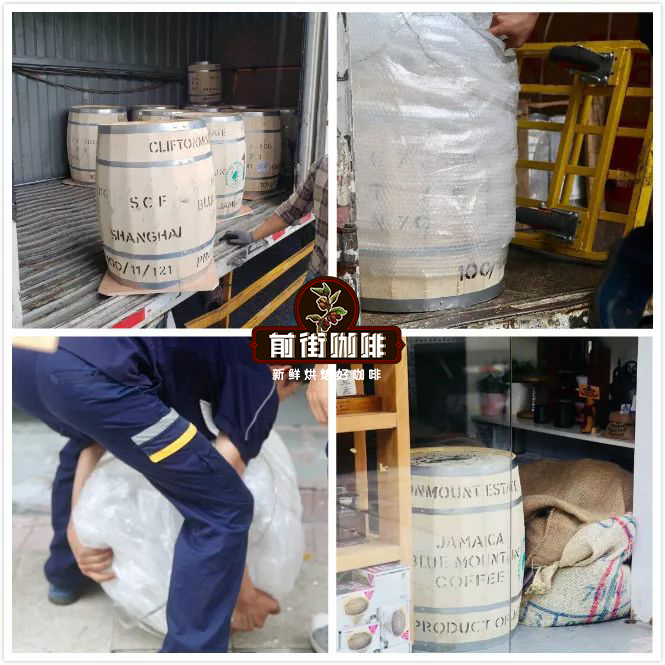
Suggestion on brewing Jamaican Blue Mountain No. 1 coffee beans in Qianjie coffee
Qianjie recommends using freshly roasted coffee beans for brewing, so that you can maximize the rich flavor of the coffee. The coffee beans shipped in Qianjie are all roasted within 5 days, because Qianjie is well aware that the freshness of coffee beans has a great impact on the flavor. The purpose of Qianjie roasting is "freshly roasted coffee", so that every guest who places an order is the freshest coffee when he receives it. The bean cultivation period of coffee is about 4-7 days, so when the guest gets it, it is the time when the flavor is the best.
Powder quantity 15g, water temperature 86 ℃, ratio of water to powder 1:15, moderate grinding (pass rate of Chinese standard No. 20 sieve 75%)
Generally choose these filter cups, V60 filter cup, kalita fan-shaped and Kono, Qianjie coffee is mainly brewed with Kono filter cup for display. Qianjie Coffee chooses Kono filter cup mainly because Blue Mountain Coffee chooses deep roasting, high temperature can easily lead to over-extraction, so Qianjie Coffee chooses 86 ℃ in water temperature. If V60 filter cup or other filter cup with fast flow rate is used at this temperature, it is easy to lead to insufficient extraction, while Kono has few and short ribs, which can isolate the gap between filter paper and filter cup, increase the residence time of water flow and have the function of soaking. Therefore, combining the test results of all the brewing parameters, Qianjie coffee finally chose the Kono filter cup.
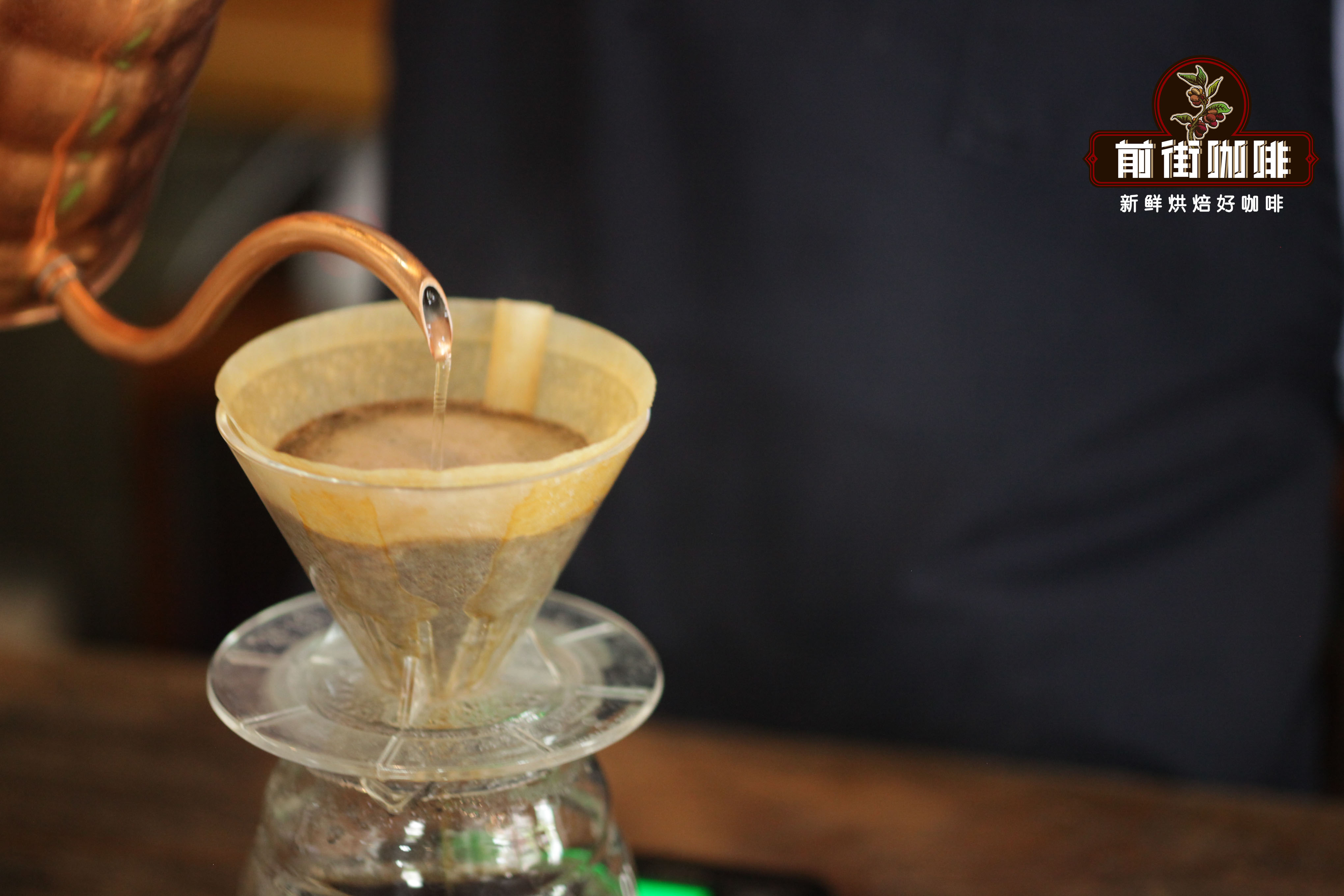
In the brewing technique, Qianjie coffee is extracted by stages, that is, three-stage water injection method. Steaming with 30g water for 30s, the first small flow was injected around the circle to 125g off water, and the second stage of water injection was continued when the liquid level was about to expose the powder layer, and the total extraction time (including steaming) was 225g.
Having said so much, Qianjie Coffee has one last point: there is often a Blue Mountain flavor coffee mix on the market, and the so-called "Blue Mountain blending" actually has nothing to do with Blue Mountain. The reason for this is that the early Blue Mountain coffee is rare and expensive, and the operator uses mixed beans and deep roasting to make coffee close to the blue mountain taste according to the blue mountain flavor. therefore, conscientious merchants in domestic and foreign markets will tell customers that this is a comprehensive blue mountain, blue mountain flavor, blue mountain style coffee beans, not real blue mountain coffee.
The real Blue Mountain and Blue Mountain flavor are two different concepts, which are generally roasted with other beans to mimic the similar taste of Blue Mountain coffee. The beans of "Blue Mountain matching" are mixed, have a big difference in shape and are easier to identify. Also do not believe in dozens of yuan a pound of "the best Blue Mountain", more than ten yuan a cup of "Blue Mountain Coffee". Not all the blue mountains are true blue mountains!
Important Notice :
前街咖啡 FrontStreet Coffee has moved to new addredd:
FrontStreet Coffee Address: 315,Donghua East Road,GuangZhou
Tel:020 38364473
- Prev

Why is freshly baked coffee not so good? how to raise beans?
Professional barista Communication Please pay attention to the Coffee Workshop (Wechat official account cafe_style) the fresh coffee beans will retain more aromatic substances, but the beans are not as fresh as possible. There is a period called the bean cultivation period, which most freshly roasted coffee beans have to go through. In fact, freshly roasted coffee beans often fail to extract the flavor they should have.
- Next
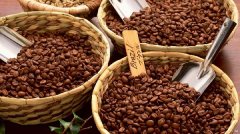
How much caffeine does a cup of coffee contain? Will low caffeine taste better?
Communication of professional baristas Please pay attention to the coffee workshop (Wechat official account cafe_style) how much caffeine a cup of coffee contains, in addition to the variety of coffee beans, mainly depends on the roasting time and extraction time of coffee beans. As long as you master the variables that affect the amount of caffeine, you can drink it in the right situation and mood.
Related
- Beginners will see the "Coffee pull flower" guide!
- What is the difference between ice blog purified milk and ordinary milk coffee?
- Why is the Philippines the largest producer of crops in Liberia?
- For coffee extraction, should the fine powder be retained?
- How does extracted espresso fill pressed powder? How much strength does it take to press the powder?
- How to make jasmine cold extract coffee? Is the jasmine + latte good?
- Will this little toy really make the coffee taste better? How does Lily Drip affect coffee extraction?
- Will the action of slapping the filter cup also affect coffee extraction?
- What's the difference between powder-to-water ratio and powder-to-liquid ratio?
- What is the Ethiopian local species? What does it have to do with Heirloom native species?

